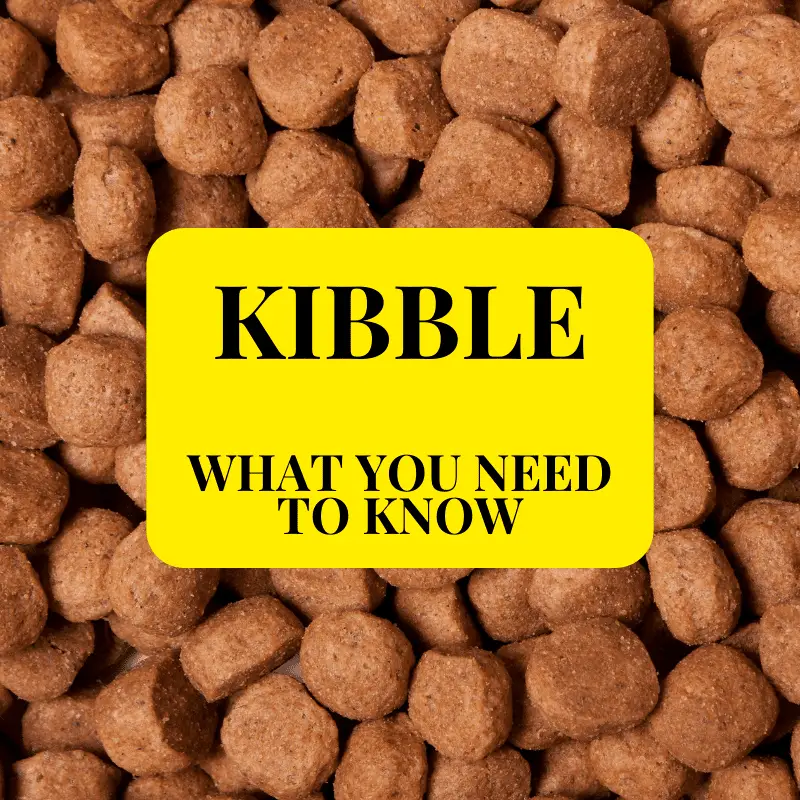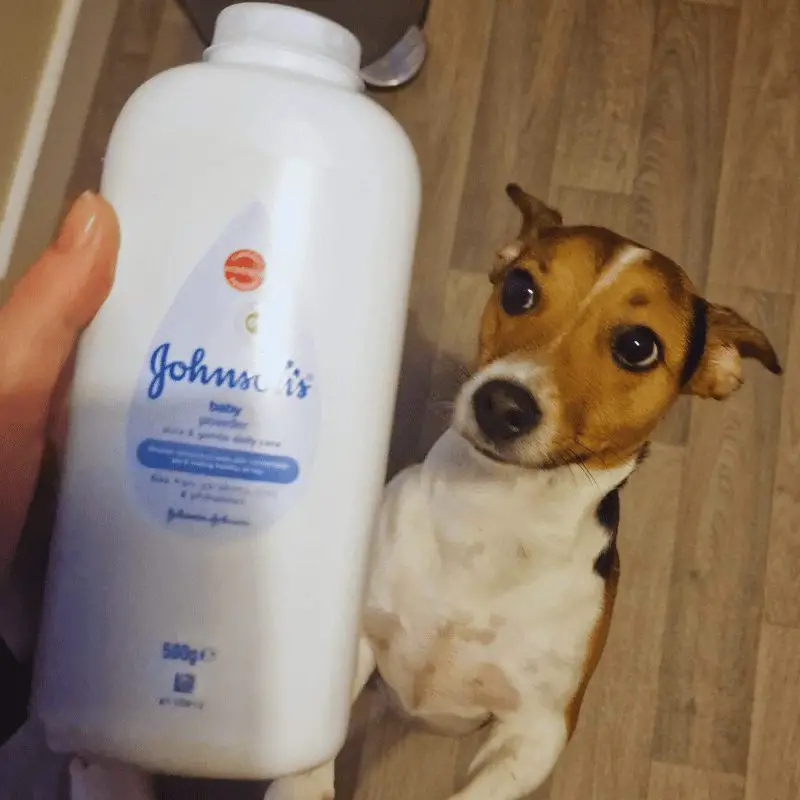Dogs are important members of the family. Like us, they need good food to stay healthy and live long lives.
Many people are familiar with kibble dog food or feed their dog kibble. But not all know what’s in it and how it is cooked, which makes it not the best nutritional value for dogs. However, there are things you can do as a pet owner if you give your dog Kibble.
Let’s run through the pros and cons of Kibble. Then I will briefly discuss how it’s made and look at other cooking techniques used in the dog food industry.
Pros and Cons of Kibble
Like anything, there are pros and cons to everything. The below shows you that there are much fewer pros than cons to Kibble. However, these three pros may be necessary for you and your dog. If so, I also share below what you can do to boost them when feeding Kibble.
Pros
- Cheap
- Convenient
- Long Shelf Life
Cons
- A risk is that Kibble can be made up incorrectly during manufacturing, resulting in more of an ingredient which could be toxic.
- Starchy ingredients: CMO corn, oats, wheat flour, gluten
- Adding synthetic vitamins and minerals since its low quality after the cooking process
- Very high in carbs
- Low in meat and low in the nutritional meat value
- Not tasty, so manufacturers must spray the fats back onto the food after cooking.
- Dehydrating to dogs
Nasty Ingredients Found in Kibble
Some of the nasty ingredients found in Kibble are labelled below. Some dog food brands do their best not to add in the below. However, you should look for an alternative if you find any of these.
Meat Meal: Parts of the animal that humans don’t consume
Bone Meal: Crushed-up bones from any animal
Corn: A cheap filler that turns directly into sugar
Wheat: Number one food allergen in dogs
Soy products: Can cause endocrine disorder
By-products: These are the nasty parts of meat, much like meat meal.
Synthetics: These are often low-value human-made vitamins and minerals that need to be added during the kibble manufacturing process. If the food were fresh, synthetics would not need to be added.
Good Ingredients Found in Kibble
If your dog’s Kibble has any of the below ingredients listed, then the food is of good quality; it’s just the cooking process that lets its down.
Vegetables: Good quality vegetables are needed in a dog’s diet.
Legumes: such as chickpeas, lentils, green beans, and lima beans, all enhance a dog’s health.
Botanicals, Herbs or Plants: These are added health enhancements for your dog. If listed on the label, the quality is better, and your dog’s health is at the forefront of their company.
Pure/Fresh Meat: A highly nutritious and palatable protein source of meat taken from a specific animal. Such as beef, chicken, or duck. The better quality kibble dog foods will have pure or fresh meat labelled.
What you MUST do if your dog eats Kibble
The correct answer would be changing their food to freshly cooked, home-prepared food or raw food. However, not everyone has the time or money to implement this. However, what you can do to help a dog’s nutrition when fed Kibble is the following:
- Add moisture through food toppers.
- Alongside fresh water, give your dog goats milk.
- A daily supplement of high-grade vitamins and minerals
How Kibble is made and Why dogs need extra hydration and food toppers
Kibble is heated to extremely high temperatures, stripping the food of most of its nutritional value. It’s then added with synthetic vitamins and minerals, sprayed with fat gathered from the top during the cooking, and reapplied for flavour.
Kibble has far too many carbs in most of the brands on the market. This means they are not getting the best nutrition naturally suited for their digestive system.
A dog without good nutrition will struggle with their immune system, which leaves them vulnerable to illnesses and diseases.
Kibble food is left with barely any moisture, meaning that our dogs need to get all their fluids from the water bowl creating a constant thirst in our dogs!
One way to tackle dehydration in dogs when solely fed Kibble is to add food toppers high in moisture.
Examples of kibble toppers


Foods High In Moisture
Also, adding goat milk to your dog’s Kibble or given on its own will give them a hydration boost. See here my article explaining why goat milk is good for dehydration.
Other Dog Food Cooking Techniques and What They Mean
Dehydrated Dog Food (Low Nutritional Value)
Cooked at a slow heat temperature removes the moisture and creates a dry shelf-stable product. Pretty much the same as the kibble cooking process but a bit better.
Air-Dried Dog Food (Low Nutritional Value)
This cooking technique uses consistent air circulation to remove moisture and create a shelf-stable dry product.
Freeze-dry Dog Food (Medium Nutritional Value)
This way of cooking is much better than Kibble. It removes moisture but leaves a lot of the vitamins and minerals and has a better flavour since the flavour is frozen.
Frozen Raw Food (Very High Nutritional Value)
Ancestral diet never consisted of cooked food and especially not processed foods like Kibble, air-dried, and dehydrated dog food.
Frozen raw food retains all the goodness in the food—no need to add any Synthetics, and it’s as close to the natural diet as possible.
Dogs have short digestive tracks hence why they are mainly meat-eaters.
The importance of a robust immune system
You cannot replicate the bond between humans and dogs with any other animal. They are our best friends and companions in life’s every step; they help us when we need them most. That is why we owe them the best nutrition that gives them the most robust immune system to help them deal with external or internal threats.
Nutrition plays a massive role for dogs; if the food is of poor quality, the dog’s body is not equipped to fight off illnesses or diseases.
That’s why feeding your dog good nutritious food is so important to give them a healthy, robust immune system.
It’s easy when you know what ingredients to look out for and when you understand the differences between the cooking processes and how they affect the food’s quality.
With the information above, you can decide what type of food you provide your dog and what ingredients you should avoid when choosing good quality food.
Last Advice and What Ingredient I found In My Dogs Kibble
Since completing my canine nutrition course, I have entirely changed my dog’s diet.
I was distraught with the ingredients in my dog’s Kibble. I won’t name the brand, but it is very well-known.
I was surprised that this brand had 27% bone meal in its food packaging. It was misleading because it implied it was very healthy and good quality food on the front of the packaging.
They didn’t state on the front it had crushed it up bones, and with little added meat, plus synthetics added as the main bulk of the food was unhealthy.
I was feeding my puppy this low-quality food at one of their most critical times: the growth period.
So, I advise not to trust what you see on the front of food packaging; instead, look at the label on the back.
If you have to have Kibble for a dog, try to get food that includes fresh meat, pure meat and added botanicals.
Check out The Dog Food Directory. They have a massive collection of dog foods that break down the individual ingredients. You can search for any dog food brands.
They give a rating out of 100 on how good it is.
This will help you in your quest to find good-quality dog food.
Good Luck!












